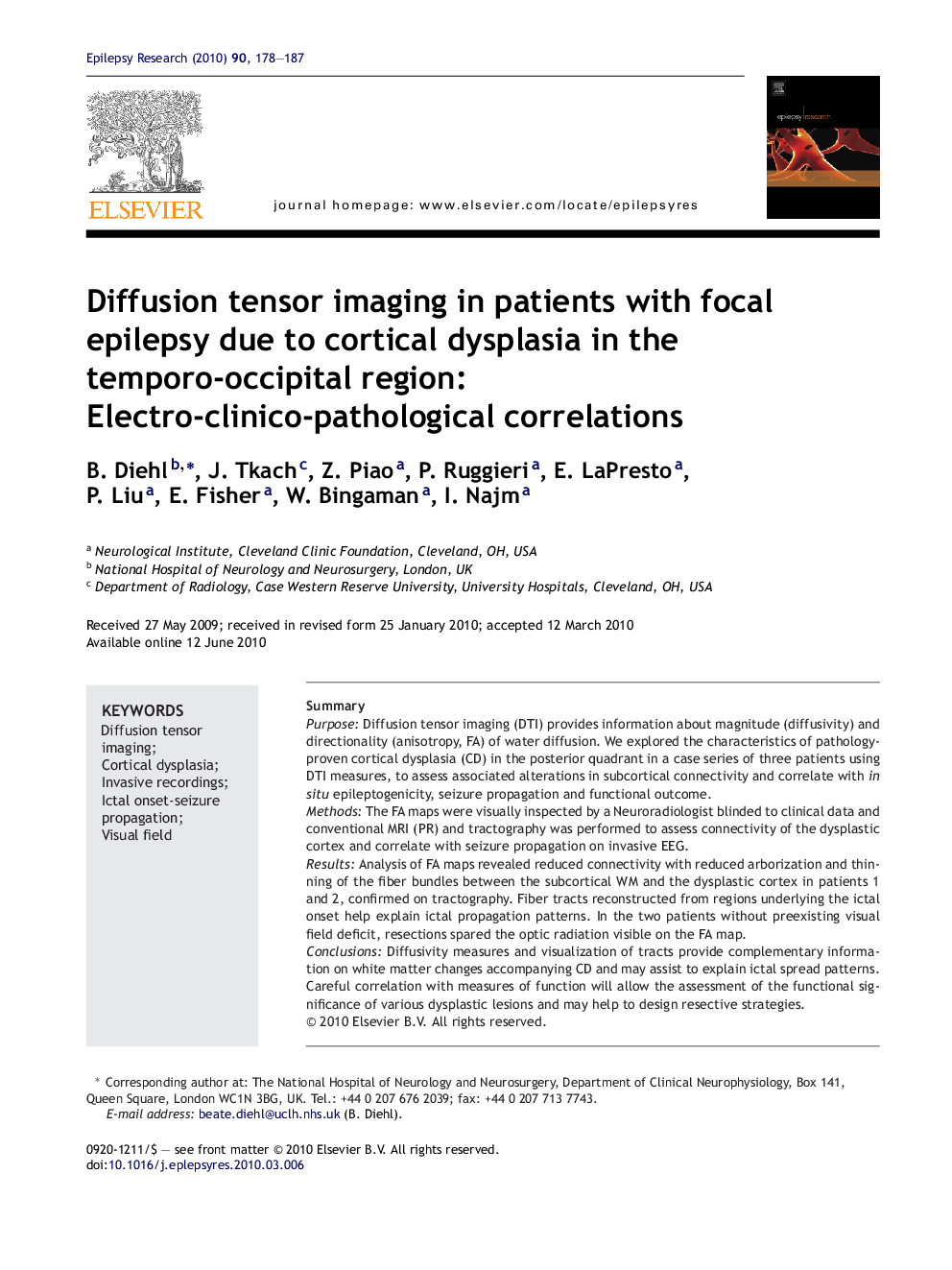| Article ID | Journal | Published Year | Pages | File Type |
|---|---|---|---|---|
| 3052548 | Epilepsy Research | 2010 | 10 Pages |
SummaryPurposeDiffusion tensor imaging (DTI) provides information about magnitude (diffusivity) and directionality (anisotropy, FA) of water diffusion. We explored the characteristics of pathology-proven cortical dysplasia (CD) in the posterior quadrant in a case series of three patients using DTI measures, to assess associated alterations in subcortical connectivity and correlate with in situ epileptogenicity, seizure propagation and functional outcome.MethodsThe FA maps were visually inspected by a Neuroradiologist blinded to clinical data and conventional MRI (PR) and tractography was performed to assess connectivity of the dysplastic cortex and correlate with seizure propagation on invasive EEG.ResultsAnalysis of FA maps revealed reduced connectivity with reduced arborization and thinning of the fiber bundles between the subcortical WM and the dysplastic cortex in patients 1 and 2, confirmed on tractography. Fiber tracts reconstructed from regions underlying the ictal onset help explain ictal propagation patterns. In the two patients without preexisting visual field deficit, resections spared the optic radiation visible on the FA map.ConclusionsDiffusivity measures and visualization of tracts provide complementary information on white matter changes accompanying CD and may assist to explain ictal spread patterns. Careful correlation with measures of function will allow the assessment of the functional significance of various dysplastic lesions and may help to design resective strategies.
